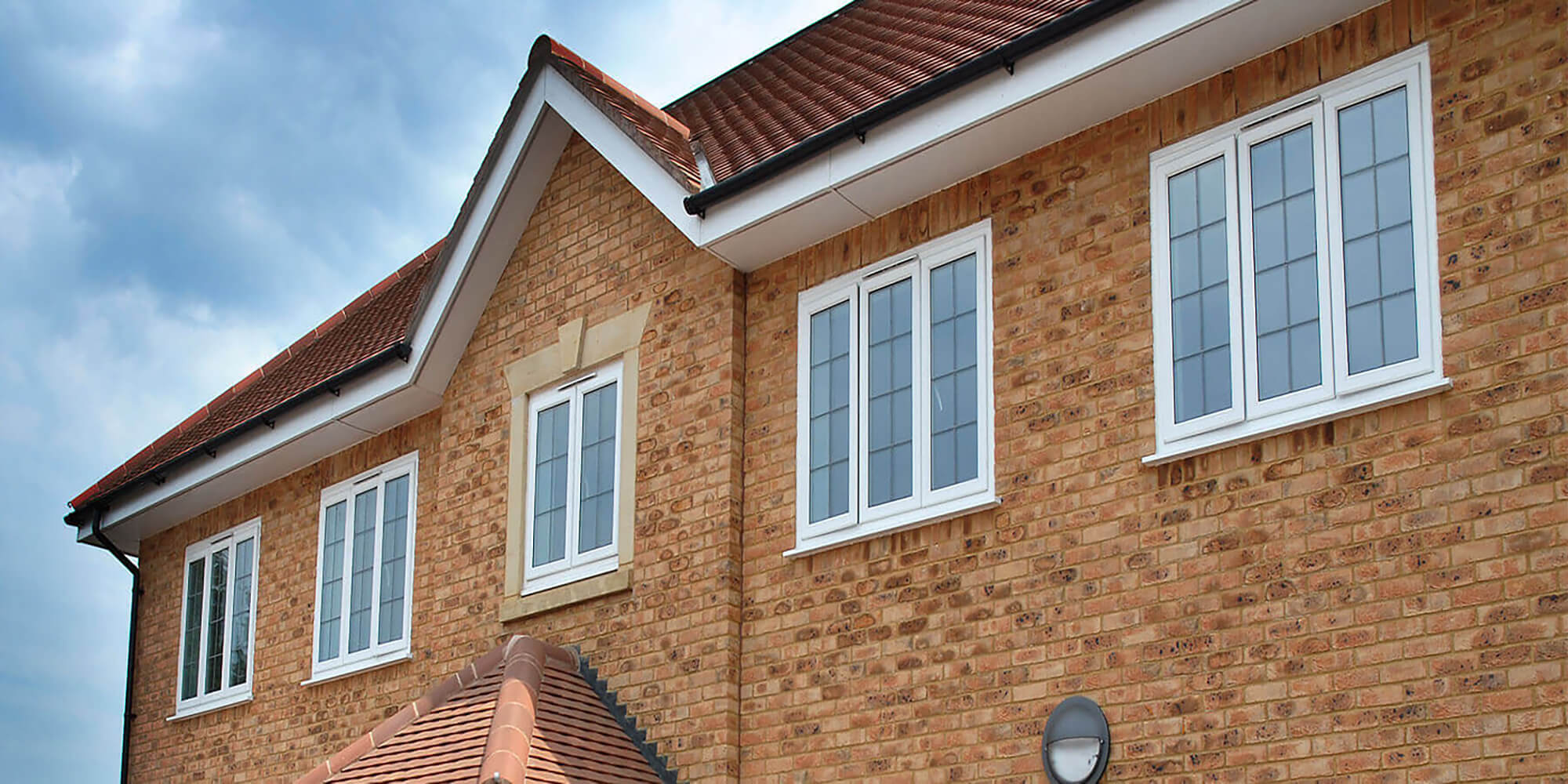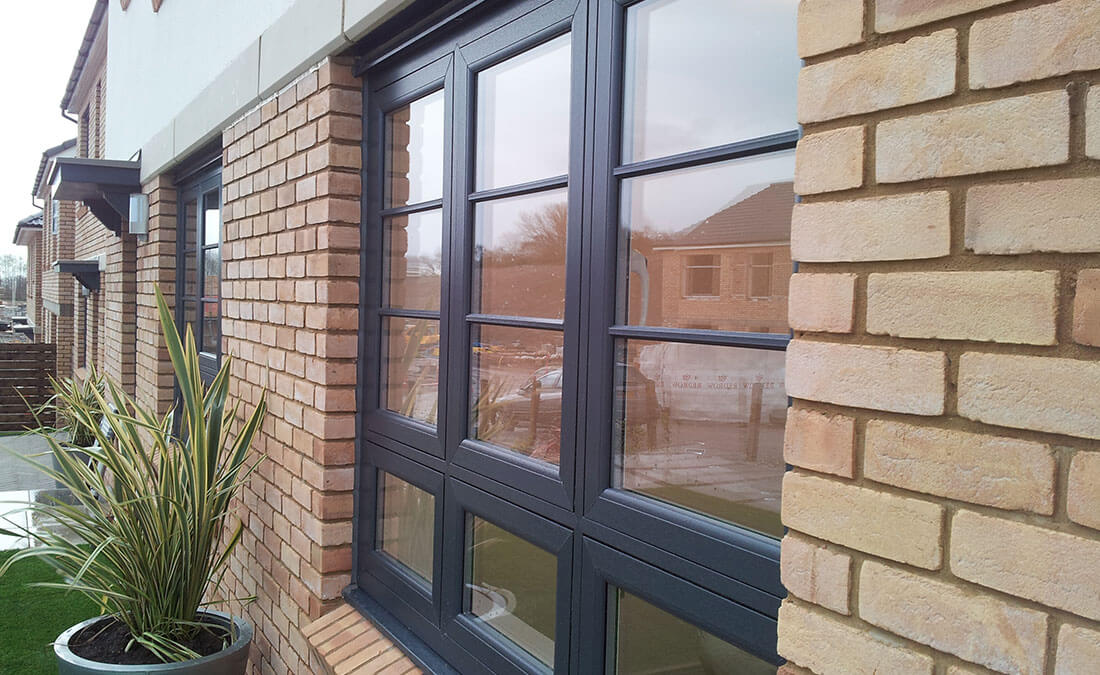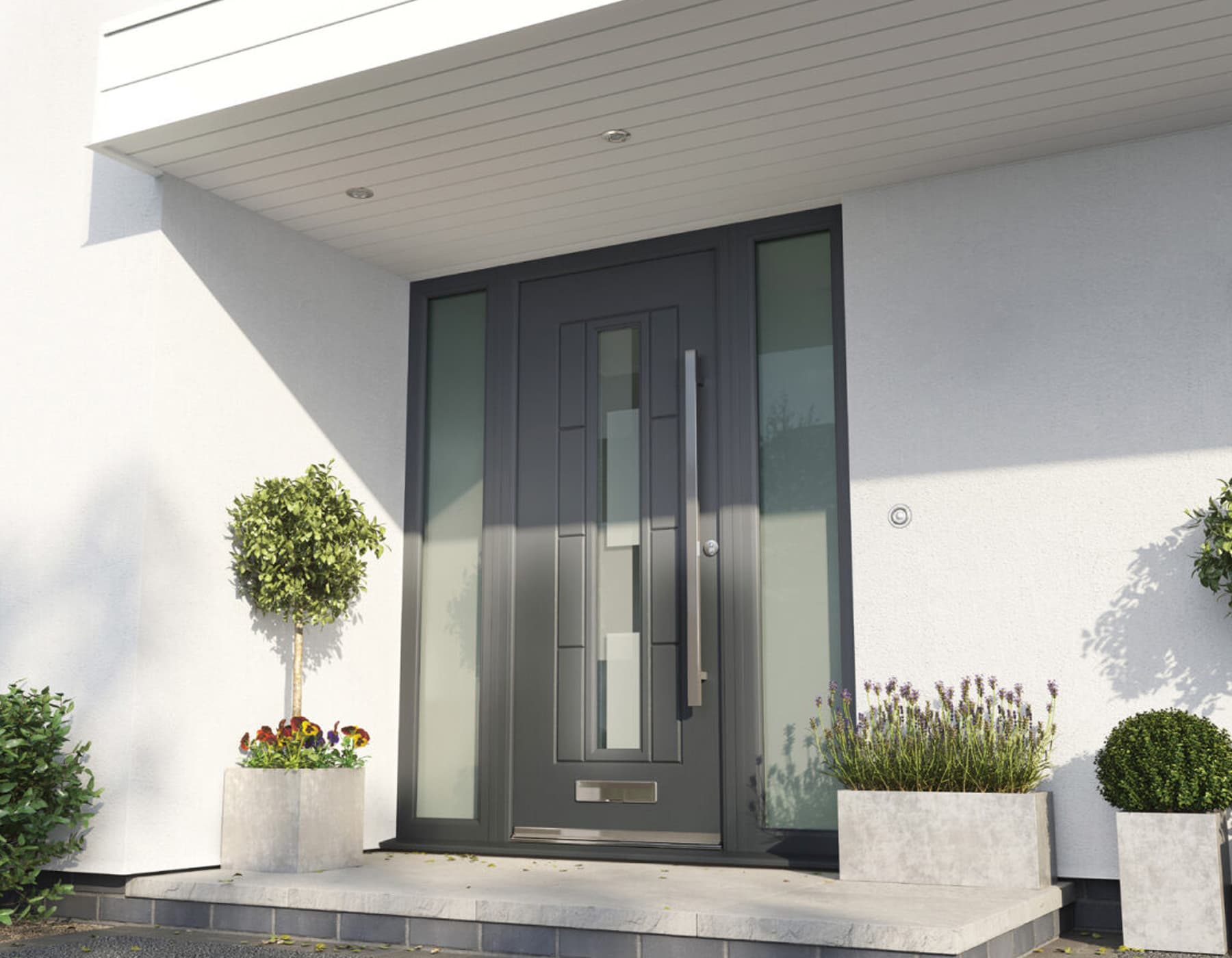
Casement windows have several benefits for any type of property. These versatile windows are the oldest and most popular style in the UK, featuring a hinge on the side (or top for some models), and are available in single or double panels with various configurations.
What do casement windows look like?

Casement windows resemble doors, as they are hinged at the side and open outward without a rail, unlike double-hung or sliding windows.
Casement windows can be made from uPVC, timber, or aluminium for a modern look and will suit most property types.
The different types of casement window
- Side hung – Hinged at the side and swings outwards
- Single casement – A basic window with one panel, usually side hung
- Double frame/ French casement – Two panel windows, both side hung with a central mullion (dividing beam) and handles in the centre. Opens outwards to create a large aperture opening
- Top hung/awning window – Opens from the bottom and is hinged at the top, swinging outwards to keep rain out in wet climates
- Bottom hung/hopper window – Opens at the top of the frame with a hinge at the bottom, tilt and turn using a bottom hinge. Ideal for apartments and upper floor rooms to allow safe opening.
- Flush casement – Sleek frame where the window sits flush in the frame when closed. A contemporary finish that is becoming more popular, especially for aluminium frames that have a slim profile
- Fixed casement – A casement window that doesn’t open. Usually part of a configuration that has window openers on either side. Popular in bay windows.
Are casement windows the best type of window?

While they are versatile in terms of style and function, and offer an energy efficient seal when closed, casement windows are also limited when it comes to size due to weight restrictions of the glass and opening panel hinges.
Casement window parts
If you’re thinking about upgrading your property with new casement windows, it’s useful to know their various components:
- Window Frame – Holds the window in position, with horizontal head and sill parts and vertical jambs
- Window Sill – Slanted to direct rainwater away from the window and building
- Casement – The opening part of the window that secures the glazing with hinges on the side, bottom, or top of the frame
- Mullion – Vertical supporting strips that divide separate units and are usually made of the same material as the window frame (aluminium, timber or uPVC)
- Transom – A horizontal supporting strip that divides separate units, similar to a mullion, and is made of the same material as the frame
- Lock handles – Found on the jamb, with various colours and styles depending on the type of opening (crank and turn or push out)
- Trickle vents – Added to prevent condensation and increase ventilation, with an outside grill and inside closing vent on the top of the frame.
- Georgian bars – Fitted to the inside of the unit and made of horizontal and vertical bars to divide the glass into smaller squares, like during the 18th-century Georgian era.
- Astragal bars – Fitted to a single pane on top, externally and internally, similar to Georgian bars.
How much do casement windows cost?

Casement window cost is dependent on several factors, making it challenging to determine an average price. Factors include:
- Chosen material
- Style
- Glazing
- Finish
- Other features such as hinges and locking mechanisms
What is a casement picture window?
Commonly used in living spaces with attractive views, casement picture windows are large rectangular windows that cannot be opened, designed to maximise the area of glass and appreciate views.
What is the difference between a casement window and a regular window?
Casement windows have screens attached on the inside, while double-hung windows have screens attached on the outside. This allows casements to swing open while keeping the opening covered by the screen.
Why do people use casement windows?
Casement windows offer excellent ventilation, making them ideal for large rooms or moisture-prone areas like the kitchen or bathroom.
They also have a clean and elegant look that fits any home style and are the most energy-efficient operable window style, thanks to their airtight seal.
Casements maximise beautiful views with slimmer frames, and are easy to operate and maintain with a strong, durable hand crank and easy-to-clean hinge.
Choose Plan-it Windows to install your casement windows today
Plan-it Windows offers energy-efficient uPVC and aluminium casement window frames that are durable and modern.
Replacing old windows with charming casements can improve energy performance and lower carbon footprint.
Our casement windows range features models with slim-lines both internally and externally and are thermally coated, providing a luxurious and durable option for North West homeowners.
Looking for a home improvement expert?
Home improvements are a big decision, so you’ll need an expert you can trust. From uPVC doors and windows to conservatories with tiled roofs – no matter the job, we’ve got hands-on experience in it all. Whether you’re in Bolton, Bury or the Manchester area, give our team a call and we will give your home the perfect finishing touch.
Our customers are saying great things
Start your project with Plan-it
A committed team of suppliers and installers, we have over 20 years’ worth of expert knowledge and experience in the North West’s residential sector. Plan-it Windows are wholeheartedly dedicated to delivering a jargon free, supportive and tailor-made service to each and every customer.
Start your project
"*" indicates required fields

Fantastic service, replaced all the doors, windows and roofline on our old house and did a great job. High quality and great value. Got them to do the roofline and cladding on our new home and again excellent workmanship and great value. Can’t recommend enough.


 Download our Casement Windows Brochure
Download our Casement Windows Brochure Download our Flush Sash Windows Brochure
Download our Flush Sash Windows Brochure Download our Bifold Door Brochure
Download our Bifold Door Brochure Download Our Rockdoor Brochure
Download Our Rockdoor Brochure Download our tiled roofs brochure
Download our tiled roofs brochure